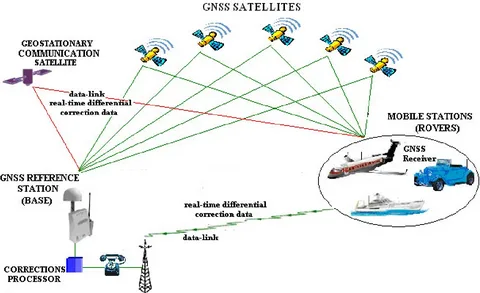Global Navigation Satellite Systems (GNSS) receivers are crucial devices used in everything from smartphones to autonomous vehicles, enabling precise positioning and navigation worldwide. If you’re interested in building a GNSS receiver, understanding the essential tools, techniques, and tips is vital, especially for beginners diving into this exciting field. This article provides a comprehensive guide to help you get started on your GNSS receiver project with confidence.
Understanding the Basics of GNSS Receivers
Before diving into the practical steps of building a GNSS receiver, it’s important to understand what a GNSS receiver does. GNSS receivers capture signals from multiple satellites to determine accurate positioning, velocity, and time information. Popular systems include GPS (United States), GLONASS (Russia), Galileo (Europe), and BeiDou (China).
A typical GNSS receiver consists of:
- An antenna to capture satellite signals
- A radio frequency (RF) front-end to filter and amplify signals
- A digital processing unit to decode and process satellite data
- Software algorithms to calculate position and other parameters
Essential Tools for Building a GNSS Receiver
When building a GNSS receiver, having the right tools is critical. Here’s a list of what you’ll need:
- GNSS Antenna
A good quality antenna optimized for GNSS frequencies is essential to receive clear satellite signals. - Software Defined Radio (SDR) or RF Front-End Module
Beginners often use SDRs, such as the RTL-SDR, to capture GNSS signals digitally. - Microcontroller or FPGA Board
For processing the signals, microcontrollers (e.g., Arduino, Raspberry Pi) or FPGAs offer a programmable platform. - Development Software
Tools like GNSS-SDR, RTKLIB, or custom software can decode and process the satellite signals. - Oscilloscope and Signal Analyzer (Optional)
These can help debug RF signals and ensure signal integrity.
Techniques for Building Your GNSS Receiver
The techniques involved in building a GNSS receiver range from signal acquisition to position calculation:
- Signal Acquisition and Tracking:
This involves detecting satellite signals in a noisy environment and locking onto them. Implementing acquisition algorithms like the FFT-based search helps identify satellite signals quickly. - Decoding Navigation Data:
GNSS satellites transmit data streams containing satellite ephemeris and clock information. Your receiver must decode this data accurately to calculate position. - Position Calculation:
Using the decoded data and known satellite positions, the receiver computes the user’s location through trilateration. - Error Correction and Filtering:
Techniques like Differential GNSS (DGNSS) and Kalman filtering improve accuracy by mitigating errors due to atmospheric conditions and multipath.
Tips for Beginners Building a GNSS Receiver
For those just starting, here are some practical tips:
- Start with Software Defined Radio (SDR):
SDRs are cost-effective and flexible for experimenting with GNSS signal reception and processing. - Leverage Open-Source Projects:
Projects like GNSS-SDR provide ready-to-use software frameworks that simplify building a receiver. - Focus on One Satellite System Initially:
Beginning with GPS only can reduce complexity before expanding to multi-constellation support. - Test in Open Areas:
Satellite signals can be weak indoors or obstructed by buildings; testing outdoors ensures better reception. - Document Your Progress:
Keep detailed notes and logs of your experiments and code to troubleshoot and improve over time.
Conclusion
Building a GNSS receiver is a rewarding challenge that combines hardware and software skills. By understanding the necessary tools, employing effective techniques, and following practical tips, beginners can successfully embark on their journey of building a GNSS receiver. Whether for hobby projects or educational purposes, this experience offers valuable insights into the fascinating world of satellite navigation technology.

